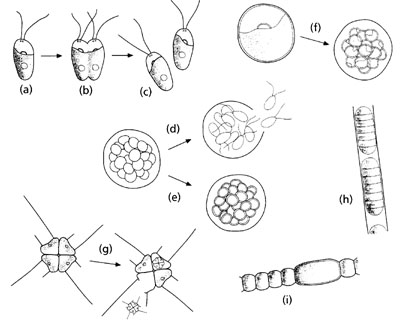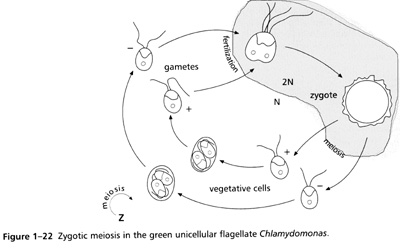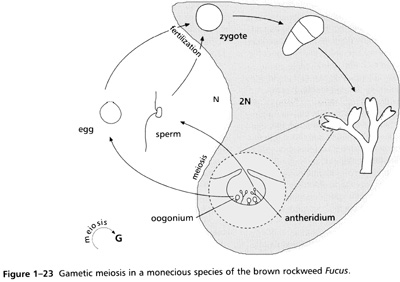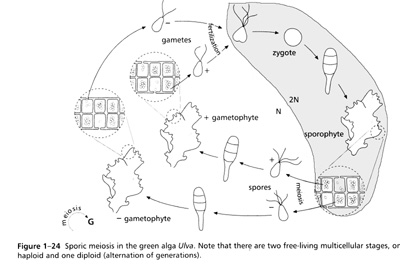1. Asexual Reproduction
One
individual can produce copies of itself
- Cellular bisection: many unicellular algae, longitudinal or trans-verse cell division
- Zoospores / Aplanospores: Zoospores are flagellated reproductive cells from which a new individual/colony can grow; sometimes the spores begin to develop within the mother cell and lack flagella: aplanospores; aplanospores can develop into zoospores
- Autospores: Nonmotile spores that cannot develop into zoospores
- Autocolony formation: In coenobia, each cell goes through several divisions to form a mini-colony
- Fragmentation: colonies or filaments break into two to several pieces that continue to grow
-
Akinetes:
Enlarged vegetative cell with thick wall and storage products; survival
of harsh conditions rather than additional copies

- Gametes look like vegetative cells or very different
- Isogamy: both gametes look identical
- Anisogamy: male and female gametes differ morphologically
- Oogamy: One gamete is motile (male), one is nonmotile (female)
- Monecious: both gametes produced by the same individual
- Diecious: male and female gametes are produced by different individuals
- Homothallic: gametes from one individual can fuse (self-fertile)
- Heterothallic gametes from one individual cannot fuse (self-sterile)
- Three different types of life cycle, depending on when miosis occurs, the type of cells produced, and if there is more than one free-living stage present in the life-cycle
- Life-cycle I: major part of life-cycle (vegetative phase) in haploid state, with meiosis upon germination of the zygote (zygotic meiosis)
- Life-cycle II: vegetative phase is diploid, with meiosis upon formation of gametes (gametic meiosis)
- Life-cycle III: three multicellular phases, the gametophyte and one or more sporophyte(s)
also referred to as haplontic life cycle, a single, predominant haploid phase

also referred to as diplontic life cycle, a single, predominant diploid phase

Gametophyte: typically haploid, produces gametes by mitosis
Sporophyte: typically diploid, produces spores by meiosis
Isomorphic: sporophyte and gametophyte look alike
Heteromorphic: sporo- and gametophyte look different
